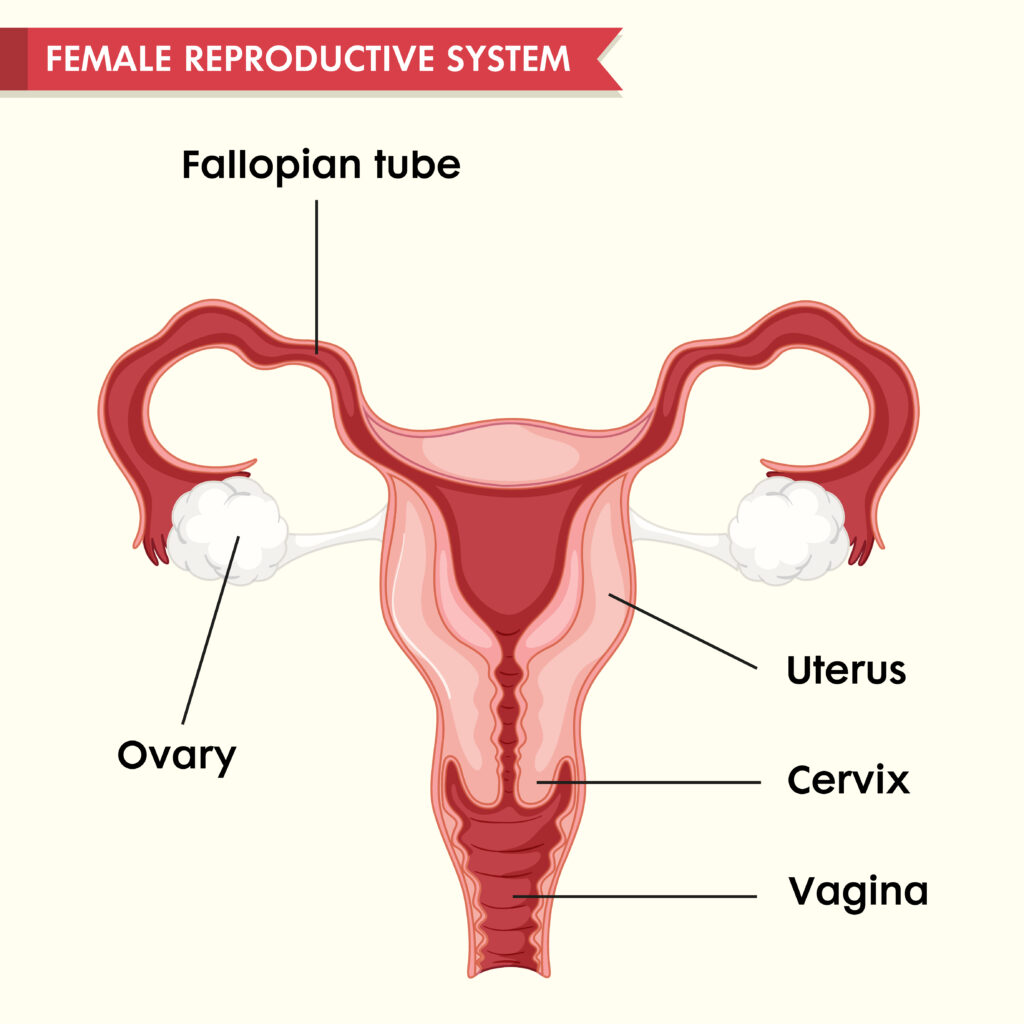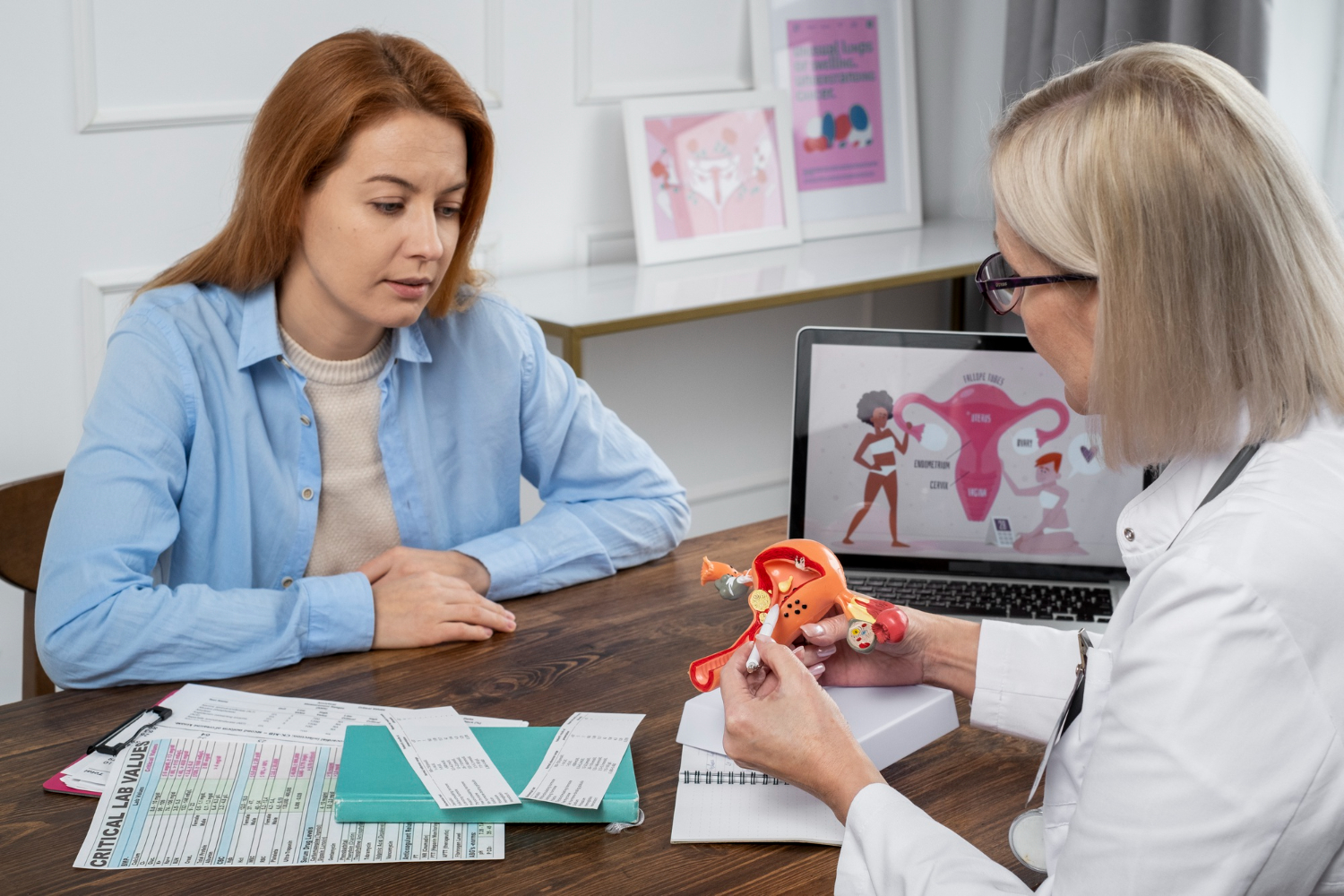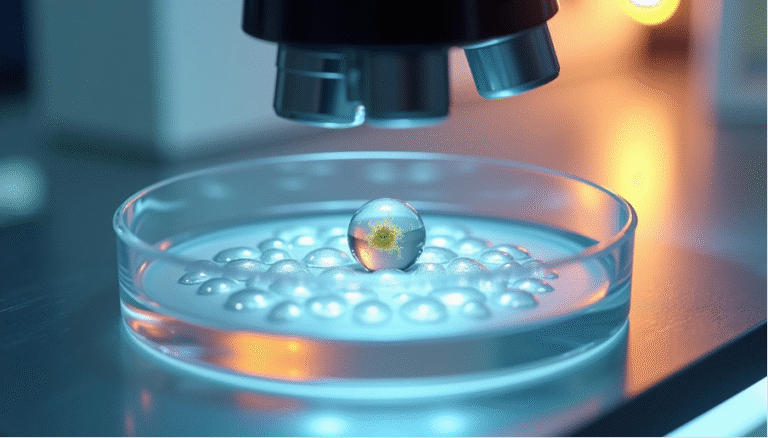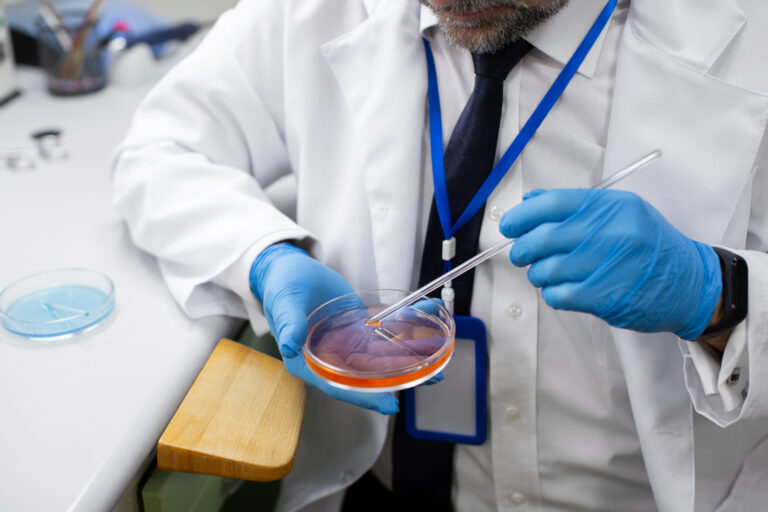The right timing of your IVF treatment can substantially affect your chances of success. Some clinics in India report success rates over 74%, making timing a vital factor. You might need to see a fertility specialist if you and your partner have tried to conceive for over a year without success. This window shrinks to 6 months for couples over 35. Women under 35 have about a 50/50 chance of having a baby with their first IVF egg retrieval and following embryo transfers. Quick action makes a difference – couples who get diagnosed within a year see higher live birth rates at 36.3% compared to 25.5% for those who wait over 2 years.
Your path to IVF treatment depends on several factors. Your age, medical history, past fertility treatments and personal situation all shape the need for IVF. This piece helps you understand the best time to start IVF treatment and its importance to your fertility experience. It applies whether you face unexplained infertility, want to preserve fertility, or plan to use donor eggs or sperm.

Understanding IVF and Why Timing Matters
IVF represents a remarkable reproductive technology that has helped millions of couples worldwide overcome infertility challenges. Let’s explore this treatment and understand how proper timing can make all the difference in your fertility experience.
What is IVF and how it works
IVF is a laboratory procedure where eggs are fertilised by sperm outside the body. The process starts with ovarian stimulation through hormone medications to produce multiple eggs. Doctors retrieve these mature eggs through a minor surgical procedure. The laboratory team combines eggs with sperm for fertilisation, either naturally or through direct injection (ICSI). The fertilised eggs develop into embryos over 5-7 days before transfer to the uterus where implantation hopefully occurs.
Why timing is critical in IVF treatment
Timing is a vital element in IVF success. The endometrium (uterine lining) accepts implantation for only 2-3 days during the midsecretory phase—known as the “window of implantation“. The timing of egg retrieval needs precise hormone administration. Follicles should measure 16-22mm to maximise mature egg collection. The match between embryo development stage and endometrial receptivity significantly affects implantation, especially with frozen embryo transfers.
How age and fertility decline are connected
A woman’s fertility naturally declines with age because of decreasing egg quantity and quality. This decline starts around age 32 and speeds up after age 37. The numbers paint a clear picture: women are born with about 1-2 million eggs. This number drops to 300,000-500,000 at puberty, 25,000 by age 37, and only 1,000 by age 51.
This biological reality affects IVF outcomes significantly. The live birth rate per IVF cycle reaches 41.5% for women under 35. It drops to 31.9% for ages 35-37, 22.1% for ages 38-40, and only 5% for women aged 43-44. Chromosomal abnormalities increase tenfold after age 40. This explains why most embryos from women over 40 show abnormalities that stop development. Your age and reproductive health circumstances play a big role in deciding the right time to start IVF treatment.
When IVF is Needed: Medical Conditions to Watch
IVF becomes the best treatment option for couples who find natural conception difficult or impossible due to specific medical conditions. Early detection of these conditions helps couples make informed decisions about when to go for IVF treatment.
Blocked or damaged fallopian tubes
Fallopian tube blockages affect over 30% of women diagnosed with infertility. These tubes create a natural path between ovaries and uterus where fertilisation happens. Any damage to them substantially reduces conception chances. Pelvic inflammatory disease, endometriosis, previous surgeries, ectopic pregnancy, or tubal ligation are common culprits. Most women don’t notice any symptoms until they try to conceive. IVF offers a solution by creating embryos in a laboratory that bypasses the damaged tubes completely.

Severe male infertility issues
Male factors contribute to 20-70% of all infertility cases. Couples need IVF with intracytoplasmic sperm injection (ICSI) for severe oligospermia (less than 5 million sperm per ml), cryptozoospermia (sperm found only after centrifugation), or azoospermia (no sperm in ejaculate). Doctors can surgically retrieve sperm directly from the epididymis or testicles for men with no sperm in their ejaculate.
Low AMH or diminished ovarian reserve
Anti-Müllerian hormone (AMH) levels show how many eggs remain compared to others in your age group. Women with very low AMH (below 0.5 ng/ml) can achieve pregnancy through IVF, though success rates drop with age. Clinical pregnancy rates reach 31% for women under 35 with low AMH. These rates decrease to 23.2% for ages 35-39 and 10.2% for ages 40-43.
Advanced endometriosis or uterine issues
Advanced endometriosis reduces IVF success through altered implantation. Surgical removal of endometriomas can damage ovarian reserve. Women with endometriosis-related infertility still succeed with IVF, especially using freeze-all embryo protocols. Fibroids, polyps, and Asherman’s syndrome (uterine scarring) are other uterine conditions that need IVF.
Genetic disorders requiring embryo testing
Couples at risk of passing genetic disorders to their children need IVF. Preimplantation genetic testing (PGT) screens embryos for specific genetic abnormalities before transfer. This testing helps with conditions like myotonic dystrophy, thalassaemia, sickle cell anaemia, cystic fibrosis, Huntington’s disease, and hereditary cancer syndromes including BRCA1 and BRCA2 mutations.
How Long to Try Before Considering IVF
When to go for IVF treatment depends on your conception timeline and previous fertility treatments. The decision balances patience with taking the right steps at the right time.
Trying naturally: when to wait and when to act
Most couples with normal fertility get pregnant quickly. Studies show that more than 80% achieve pregnancy within 6 months of trying. Couples under 35 who haven’t conceived after a year of regular unprotected intercourse might have fertility issues worth checking. The timeline changes for women above 35. They should seek help after 6 months. A woman’s fertility naturally declines with age, which makes quick action vital for older women.
Failed IUI or ovulation treatments
Many doctors start with Intrauterine insemination (IUI) before suggesting IVF. After 3-6 unsuccessful IUI cycles, doctors usually recommend moving to IVF. The numbers tell the story. IUI pregnancy rates stay around 8-10% per cycle, but IVF success rates are much higher. The same applies to ovulation medications like clomiphene citrate or letrozole. Multiple failed attempts with these treatments make IVF the next logical choice.
Unexplained infertility after 1 year (or 6 months if over 35)
Doctors can’t find obvious causes in about 30% of couples with fertility issues. Some experts suggest waiting since half the couples might conceive naturally in the second year. Research shows better outcomes with IVF than other treatments or just waiting. Women between 38-42 with unexplained infertility saw their pregnancy rates double with IVF compared to other treatments.
When IVF May Not Be the First Step
IVF works well but shouldn’t always be your first treatment choice. You might want to try other fertility options first that could save you time, money and emotional stress.

Mild sperm or ovulation issues
Couples with mild sperm issues or irregular ovulation often get good results from less invasive treatments. IUI can work well if the male partner’s sperm count is low but still adequate. IUI success rates range between 15-20% per cycle, which makes it a solid first option. Women who don’t ovulate regularly can benefit from fertility medications, with success rates of 10-15% per cycle.
Short duration of trying to conceive
Starting treatment might be too early if you’ve tried for less than a year (under age 35) or six months (over age 35). The general rule is to think over IVF after three or four unsuccessful IUI attempts.
Emotional or financial readiness concerns
IVF’s emotional rollercoaster brings both highs and lows throughout the process. You need to be emotionally ready for challenges, disappointments and uncertainties. Note that IVF often needs multiple attempts to achieve pregnancy and might never succeed. Take time to check your insurance coverage, look into financing options, and create a detailed budget before starting treatment.
Conclusion
The choice to start IVF treatment is a personal trip that depends on your specific situation. Your age is definitely a key factor, and women under 35 have substantially better success rates. You can boost your chances of conception by understanding your fertility window and taking action at the right time.
Some medical conditions make IVF the clear first choice. These include blocked fallopian tubes, severe male infertility, diminished ovarian reserve, endometriosis, or genetic issues. You should talk to a fertility specialist if you’ve tried without success for over a year. This timeline shrinks to six months for women over 35. IVF brings hope to many couples dealing with infertility, but it’s not always the first option to think over. Less invasive treatments like IUI or medication might help with mild sperm or ovulation issues. Your emotional and financial preparation are also crucial factors since the process can be challenging in both ways.
Everyone’s path to becoming a parent is different. Some people need IVF right away for medical reasons, while others might do better trying other approaches first. Getting tested and talking to specialists will help you figure out the best time to start IVF treatment. Note that starting treatment at the right time can substantially improve your success rates. This trip toward parenthood might have its challenges, but with expert guidance and good timing, you’ll be better equipped to make choices that support your family-building dreams.
Key Takeaways
Understanding when to pursue IVF treatment can significantly impact your chances of success, with timing being crucial for optimal outcomes.
- Age matters most: Women under 35 have 50% success rates with IVF, whilst rates drop dramatically after 37 – don’t delay if you’re over 35.
- Seek help after one year of trying (or six months if over 35) – early diagnosis leads to 36% higher live birth rates than delayed treatment.
- Certain conditions require IVF immediately: Blocked fallopian tubes, severe male infertility, low ovarian reserve, or genetic disorders bypass other treatments.
- Try less invasive options first for mild fertility issues – IUI and ovulation medications can achieve 15-20% success rates per cycle.
- Consider your emotional and financial readiness – IVF often requires multiple attempts and can be emotionally demanding throughout the process.
The key is balancing patience with proactive care. Whilst some couples benefit from trying alternative treatments first, others with specific medical conditions or advanced age should move directly to IVF. Consulting a fertility specialist early helps determine the most appropriate timing for your unique circumstances.
FAQs
Q1. At what point should a couple consider IVF treatment? Couples should consider IVF if they’ve been trying to conceive for over a year (or 6 months if the woman is over 35) without success. Certain medical conditions, such as blocked fallopian tubes or severe male infertility, may also necessitate immediate IVF consideration.
Q2. How does age affect the success of IVF treatment? Age significantly impacts IVF success rates. Women under 35 have about a 50% chance of having a baby with their first IVF cycle. Success rates decline with age, dropping considerably after 37. It’s crucial not to delay treatment if you’re over 35.
Q3. Are there specific seasons that are better for undergoing IVF? While IVF can be performed year-round, some clinics suggest winter as an optimal time. Spring and autumn are also considered favourable due to stable temperatures and lower chances of seasonal illnesses that could affect overall well-being.
Q4. How soon after a menstrual period does the IVF process typically begin? The IVF cycle usually begins on the first day of your period. However, you might start medication or injections before this as part of your fertility plan. It’s best to consult with your fertility specialist for a personalised timeline.
Q5. What are some alternatives to try before opting for IVF? For mild fertility issues, less invasive treatments like Intrauterine Insemination (IUI) or ovulation induction medications can be effective. These methods have success rates of 15-20% per cycle and may be worth trying before moving on to IVF, depending on your specific situation and age.
Disclaimer: This article is for informational purposes only and does not constitute medical advice. Always consult with a qualified healthcare provider for personalized guidance regarding fertility treatments





